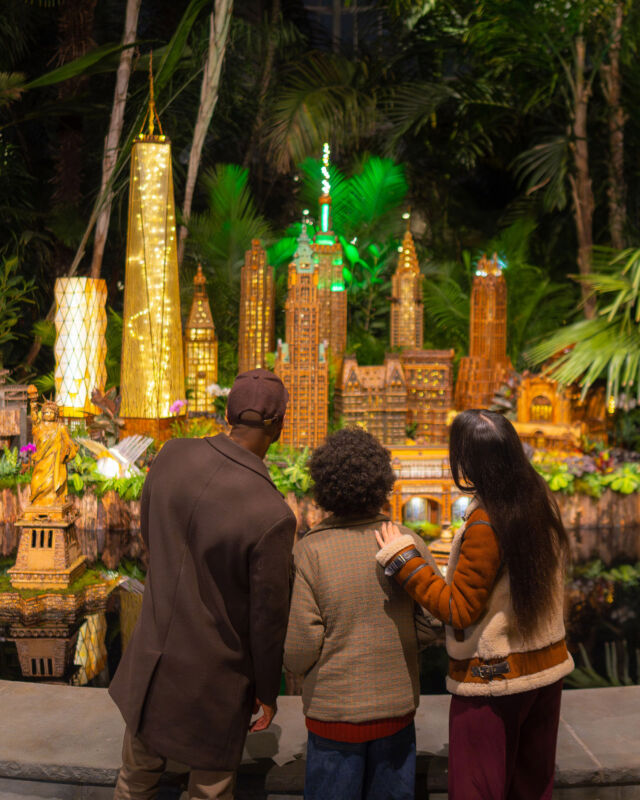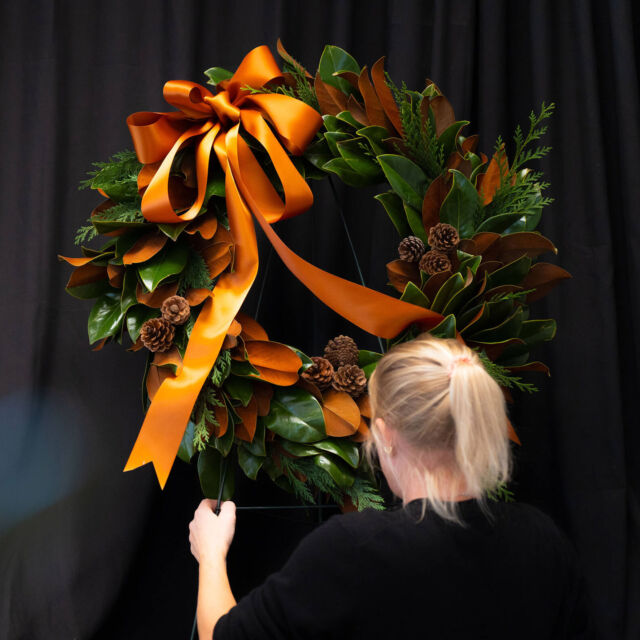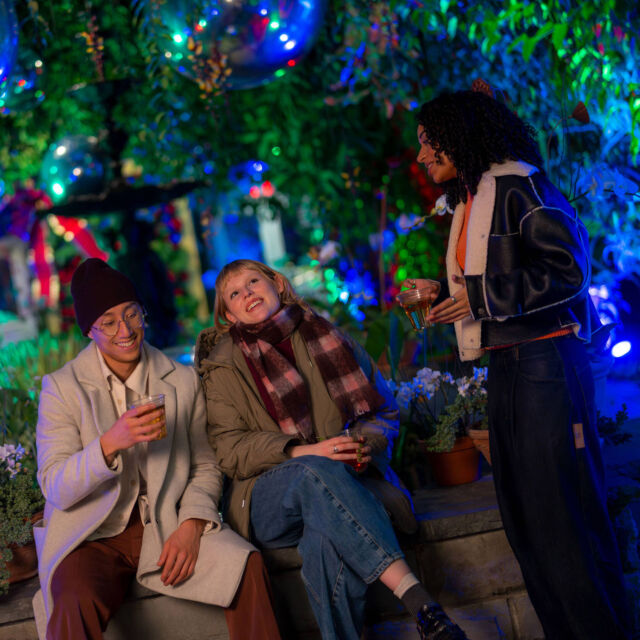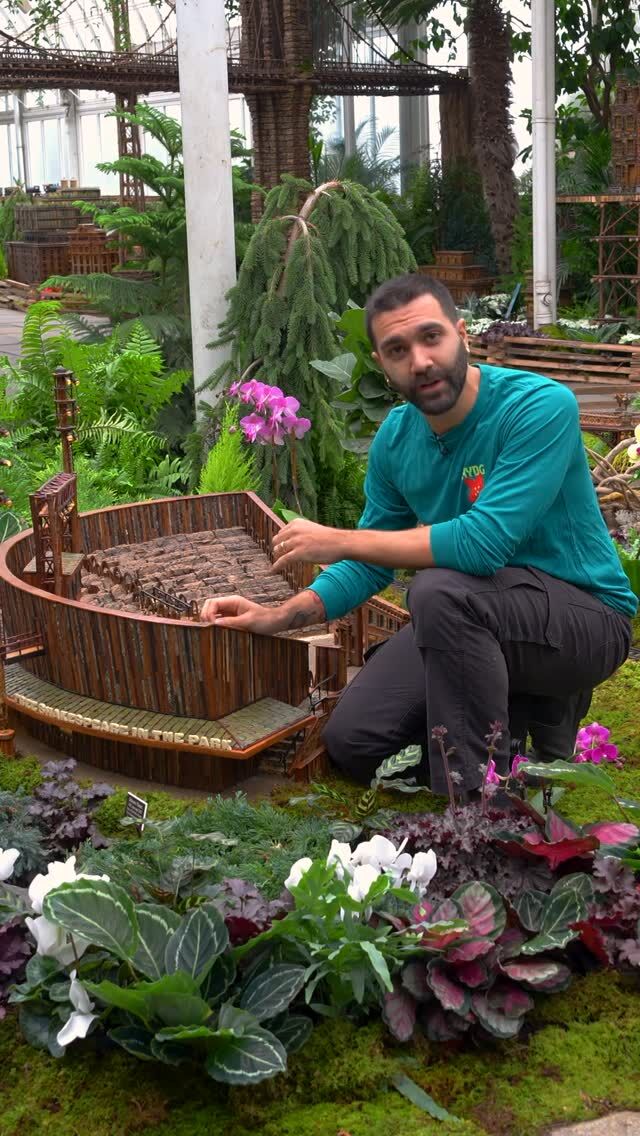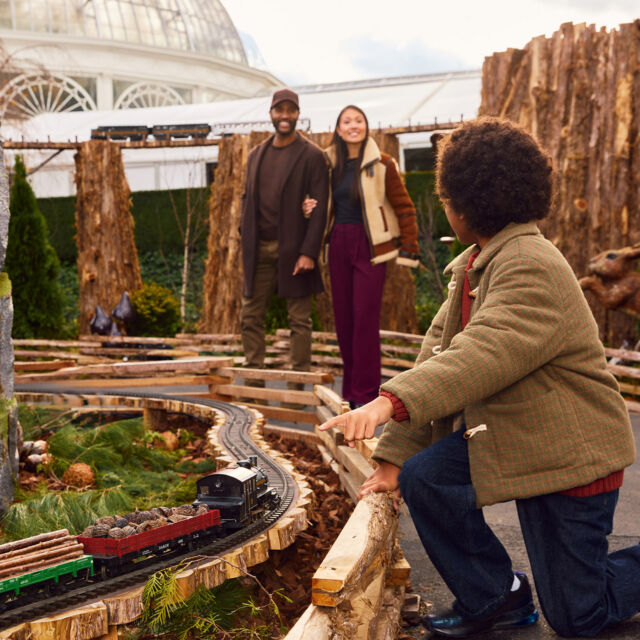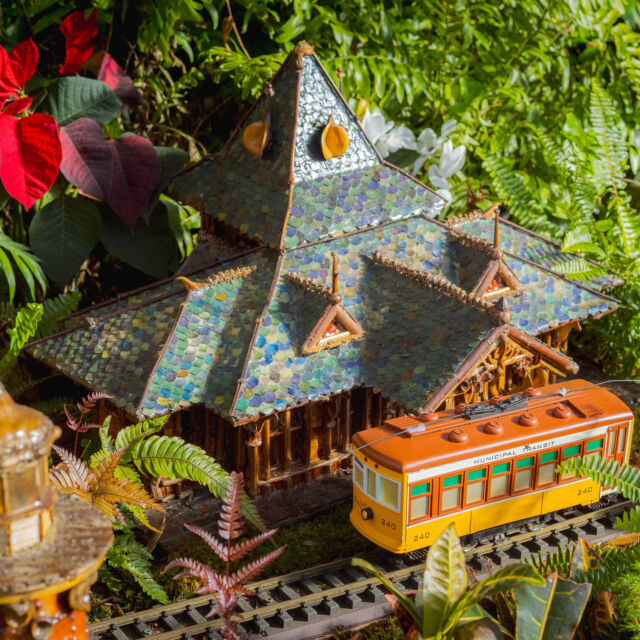Guyana, Suriname & Trinidad Beds: Growing Memory, Belonging, Access and Joy in the Global Gardens
Lakshmee Lachhman-Persad is the founder of Accessible Travel NYC and a long-time partner of NYBG.
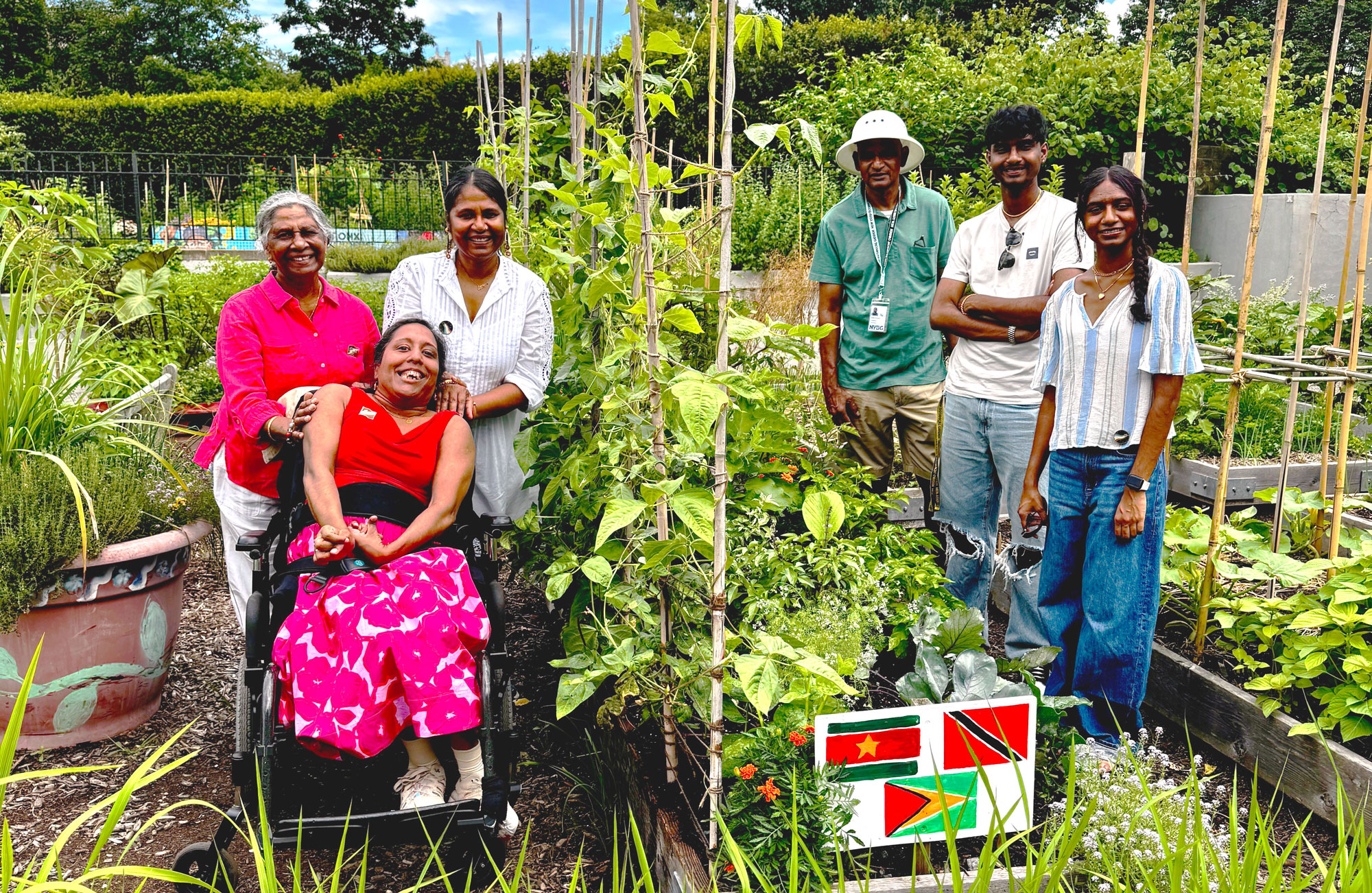
On my first visit back to the Caribbean in 2005 after immigrating here, I stepped off a plane in Trinidad and was struck by a visceral reaction I didn’t expect. Right at the airport, the sight of a simple yellow buttercup flower filled me with happiness, stirring memories I hadn’t realized were there. I understood then that plants are more than plants—they are tied to memory, to family, to home.
As a Guyanese-Surinamese immigrant in the U.S., that moment taught me how much plants carry our stories. They are memory keepers, bridging continents and lifetimes—not just through what we see, but through what we taste, smell, and touch.
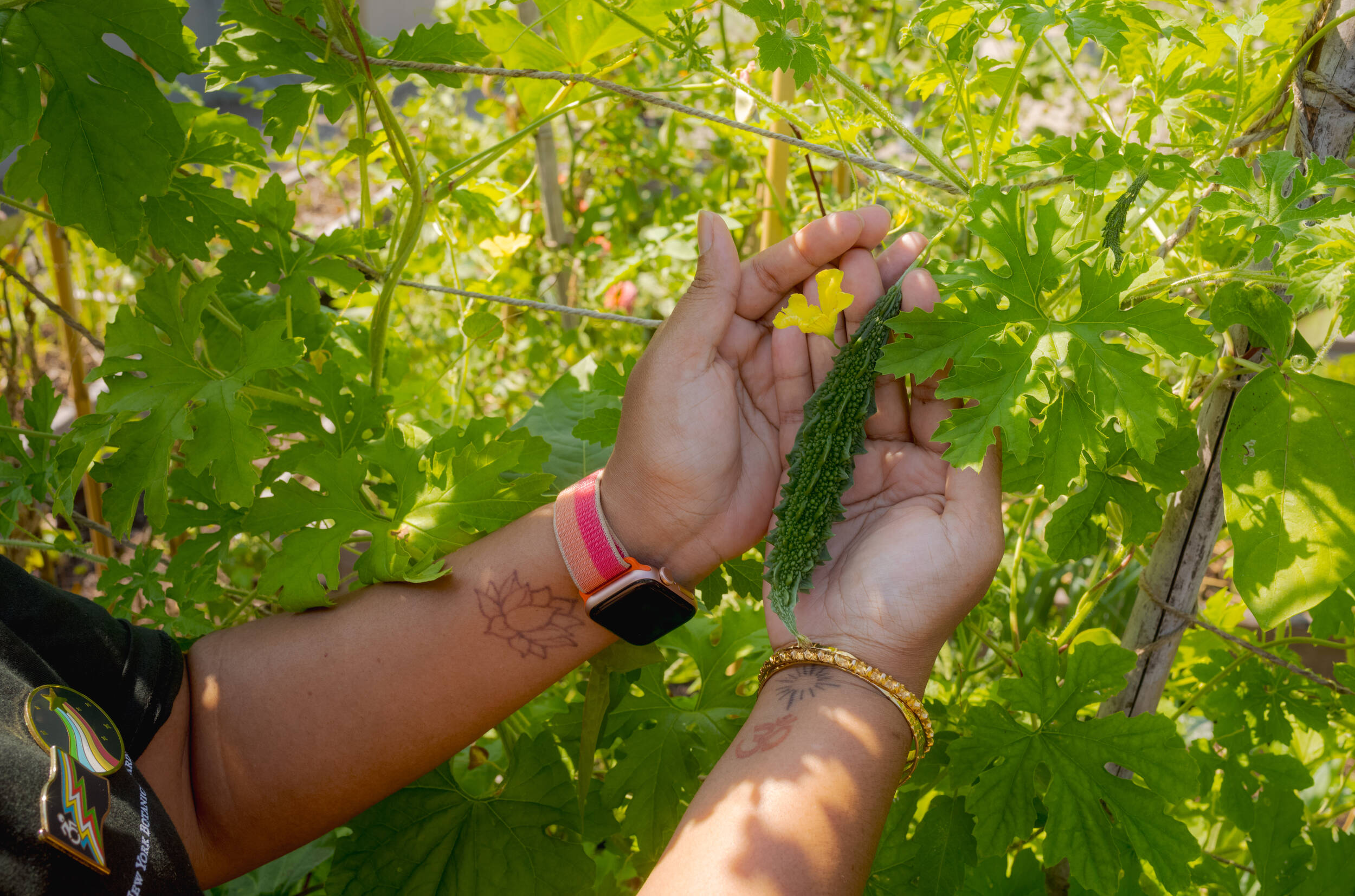
Years later, with young children and a grandmother to care for, our family discovered the New York Botanical Garden. In those days our visits were short—our attention pulled in every direction by schedules and caretaking. The beauty of the grounds was there, but it waited patiently for us to be ready.
Then came 2020, when the world paused. NYBG became our safe, open-air sanctuary. Wandering the Conservatory and lingering by plants we knew, we began to fall deeply in love. The Garden gave us something we didn’t know we were craving: literal space to breathe, heal, and belong.
In 2018, before the pandemic, I had visited with my mom and sister Annie to learn more about accessibility at NYBG for our work at Accessible Travel NYC, an online platform that shares information on accessibility in New York City. The welcome we received made us feel seen and cared for. That sense of inclusion only deepened when, in 2024, our family was accepted to tend our own two beds in the Global Gardens.
Our two beds became more than soil—they quickly became places where memory and heritage came alive. When we are there together, each of us connects in different ways: Neil smells his mother’s kitchen, Mom remembers our childhood in Suriname, Annie engages through touch, taste and scent, and the children discover the flavors of their heritage. For me, the joy is in watching those stories take root side by side in the same soil.
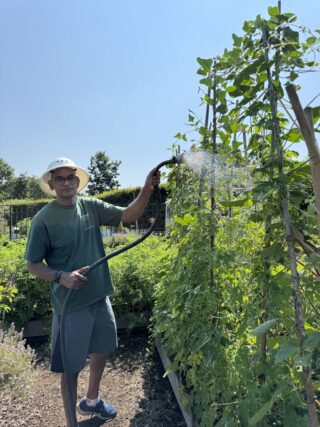
Neil is the primary gardener in our family—the one who tends the beds, designs and builds the trellis, prunes, and waters to keep everything thriving. While every plant brings him pride, the most meaningful is bandanya or shadow benni (culantro / krasie binda in Suriname), one of the very essential flavors in Trinidadian cooking. Growing it here was the first time in 30 years he had the chance to do so, reconnecting him directly to his mother’s cooking and giving him a new appreciation for her gardening, which had been vital to their family’s food. As a child, he often took her efforts for granted, but now he recognizes how much love and labor went into every harvest.
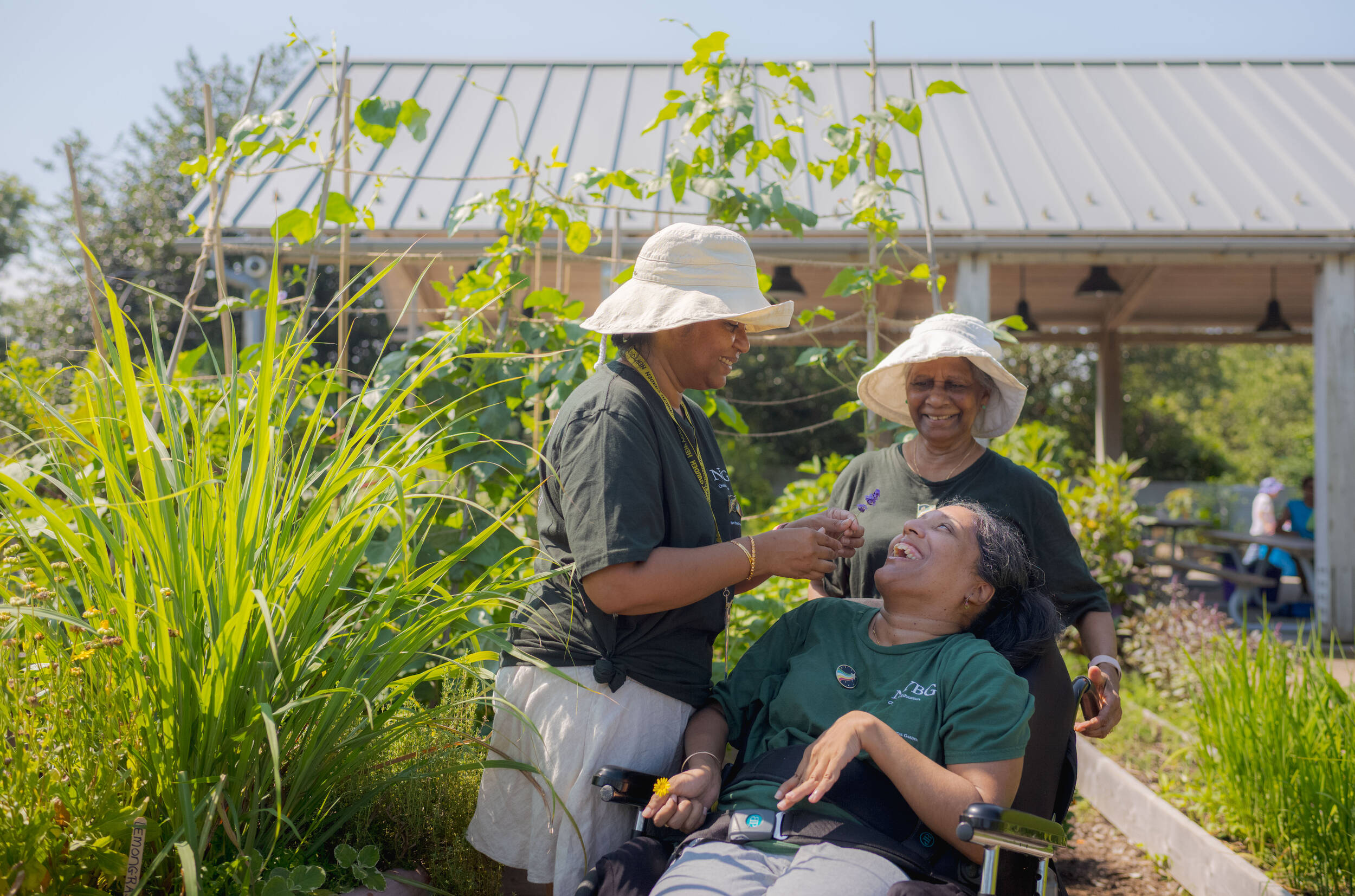
Bandanya’s dark green, thick, serrated leaves feel sturdy to the touch and carry a sharp, citrusy aroma when crushed. Its taste is bold, stronger than cilantro, and instantly recognizable in stews, curries, pelau, and especially the chows (peppery pickles) of his childhood made with green plums, green mangoes, pomseetae, and more. To his wonder, he also discovered for the first time that bandanya actually flowers, something he had never known before.
From Neil’s pride in herbs, the story flows to my mother’s joy in vegetables and flowers. Mom enjoys planting a variety of crops she grew up with in both Guyana and Suriname—like okro (okra / oker), karila (bitter melon / sopropo), bora (long beans / kouseband), tulsi (holy basil / tulsi in Hindi, also known as sacred tulsi in Suriname), marigolds, and more. Of them all, the bitter melon plant stands out because it connects us to our late dad, and carries a story tied to Annie’s and my childhood. Its ridged green skin and knobbly texture are instantly recognizable, and even brushing against the leaves releases a faint bitter scent. The taste is unmistakable—sharp, very bitter, and lingering—something children rarely love. Mom remembers how my dad would send me to pick karila as a child, but instead I’d mischievously shake the plant until the delicate yellow flowers fell, hoping to stop the fruit from forming. Annie would encourage this mischief, cheering me on as the blossoms scattered to the ground as she too didn’t like eating them. Today, bitter melon is one of the plants we choose to grow with pride and intention, its bitterness now a flavor we delight in eating—well, all the adults do, if we’re being honest. The children still keep their distance, but there is hope.
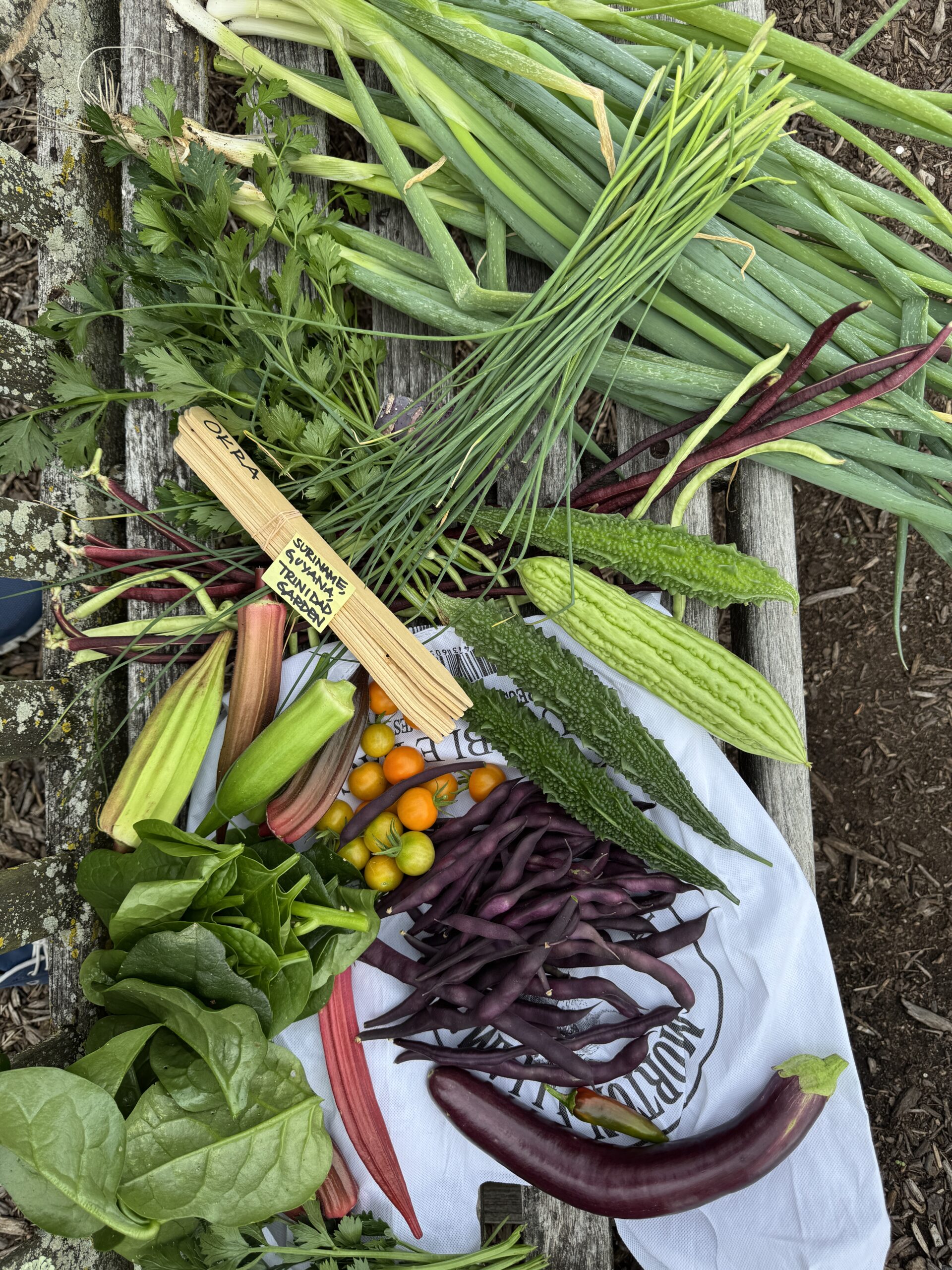
Annie’s connection to the beds is different again, centered on touch, smell, and taste. She enjoys the sensory pots near our beds, curated with the help of NYBG staff and designed to be most accessible for her in her wheelchair. They overflow with lavender, broadleaf and fineleaf thyme, chives, fever grass (lemongrass / citroengras), calendula, tulsi (holy basil), and edible flowers. Each plant invites interaction: lavender and fever grass release fragrance when rubbed between our fingers for her to smell; broadleaf thyme is velvety to her touch; marigold offers cheerful petals that are soft for her to taste (yes, they are edible we learnt!). For Annie, being able to touch, smell, and taste these plants makes gardening not only possible, but joyfully accessible.
Our children don’t visit the beds as often as we do, but when they come, they’re proud of what we’ve grown. They’ll occasionally help with harvesting and even share our stories with visitors who stop by. We take great pride in seeing Rayan develop a taste for bora (long beans / kouseband) and especially the hot wiri wiri peppers—a red, small, fiery pepper beloved across Guyana, Suriname, and Trinidad. Its bold heat and fruity flavor are unmistakable, carrying the taste of home across all three countries. Diya, meanwhile, has grown to appreciate our tomatoes and the delicacy of edible flowers. Born here in the U.S., they’ve come to relish the stories we tell about each plant and the memories they hold for us—gaining a deeper appreciation for their heritage along the way. And while they remain skeptical about karila (bitter melon / sopropo), we still have hope—especially since they happily enjoy the homemade pepper sauce without realizing it has a little bit of karila snuck in.
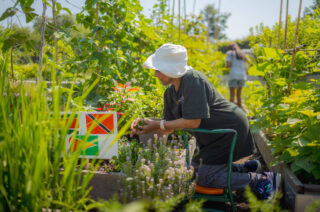
In addition to these, our beds hold poi baghee (Malabar spinach / poi), bird peppers, baigan (eggplant / antroewa), celery (selderij), ginger (gember), turmeric (koenjit), scallions (prei), purple string beans, and other herbs. Every plant carries special memories as some seeds are even sourced from family members who have passed on, making them very dear to us. Marigolds, for example, are not only edible but deeply important in our Hindu prayers, as is the sacred tulsi. Hot peppers bring back childhood memories of waiting for fruits to come into season so we could eat them with salt and bird peppah (as we’d say in our local accent and in Neil’s case, also with bandanya!). And when visitors recognize these plants—whether they are Caribbean or Asian—they often stop, smile, and share their own memories, their voices rising with excitement as conversations flow across the beds. Those exchanges make the Garden feel like a place of shared belonging not just for us but for visitors and the staff too.
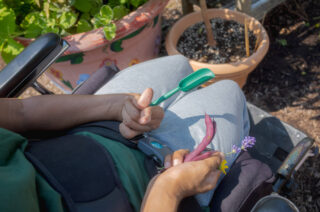
We’ve also learned to use adaptive tools for sowing, pruning, and harvesting—seed sower tool, larger tweezers, garden kneeler, and long-handled tools—so that all of us can participate as we age into our disabilities. Accessibility has been central to our family’s experience: not just through tools, accessible pathways, and trams, but through feeling welcome, valued, and represented in the plants we are able to grow.
Our beds at the Global Gardens at NYBG have become more than soil and plants. They are places where memory, culture, accessibility, and community come together. Every plant in our plot tells a story we can share with our children, with each other, and with visitors who stop by. Just like that yellow buttercup flower that greeted me in Trinidad, these beds remind us that plants are memory keepers. They hold our past, nurture our present, and root us in belonging—because we live not in one time, but with past, present, and future all at once.
For our family, tending our garden beds has become tending our roots—and those roots continue to branch into pride, joy, love, access, inclusion, belonging, and community.
🌱 Glossary of Plants in Our Beds
| Guyanese / Trinidadian Name | Surinamese Name | English Name | Notes / Use |
| Bandanya / Shadow beni | Krasie binda | Culantro |
Essential herb in Trinidad, used as seasoning raw or cooked; stronger and more pungent than cilantro
|
| Okro | Okro | Okra |
Staple vegetable common in stir fry, stews, soups, and curries
|
| Karila | Sopropo | Bitter melon |
Bitter vegetable used in curries, stir-fries and sometimes stuffed
|
| Bora | Kouseband | Long beans |
Staple vegetable, grown on trellis; used in curries and stir-fries
|
| Tulsi | Tulsi | Holy basil |
Sacred in Hinduism for prayers, teas, and medicine
|
| Baigan | Antroewa | Eggplant |
Used in curries, sautéed, or roasted
|
| Poi / Baghee | Poi | Malabar spinach |
Leafy green, cooked in sautees and dhal
|
| Fever grass | Citroengras | Lemongrass |
Used in teas, home remedies, and seasoning
|
| Ginger | Gember | Ginger |
Spice, medicinal, used in teas and cooking
|
| Haldi / Hardi | Koenjit | Turmeric |
Cooking spice, coloring, medicinal
|
| Shallot / Scallion | Lauw / Prei | Scallions |
Used in marinades, green seasoning, and as garnish
|
| Celery | Selderij | Celery |
Essential in green seasoning and marinades across the Caribbean and Suriname
|
| Wiri wiri | Wiri wiri | Hot pepper |
Small, hot, fruity pepper beloved across Guyana, Suriname, and Trinidad; used raw or in pepper sauces sauces, cooked dishes, and seasoning
|
| Marigold | Afrikaan bloem | Marigold |
Edible, used in Hindu prayers and decoration
|
SUBSCRIBE
Enter your email address to subscribe to this blog and receive updates on new posts.

